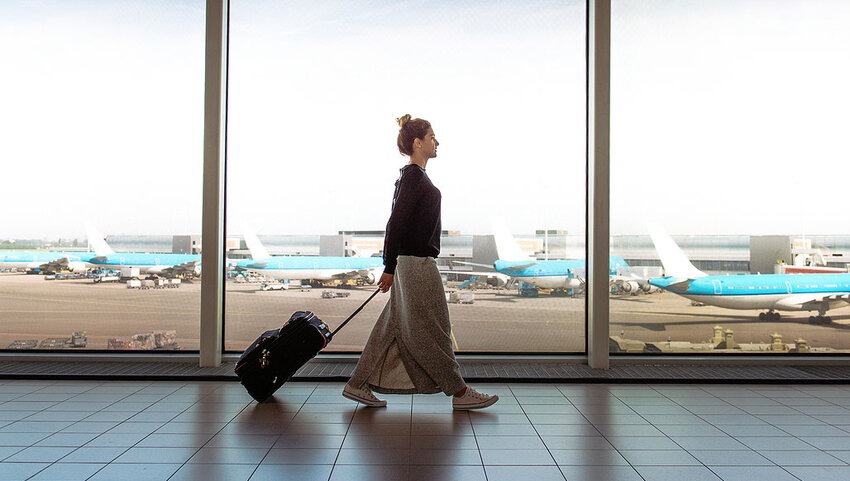Fashion
7 min read
Why Giving Up on Fancy Fashion is the New Trend in 2025
November 04 , 2025
By Sharib

In an era once defined by designer labels, runway obsession, and Instagram-worthy outfits, a new wave is quietly taking over the fashion landscape. Fancy fashion, once the beacon of status, self-expression, and cultural capital, is steadily being replaced by something radically different: simplicity, sustainability, and soul.
As we step deeper into 2025, a compelling shift is underway. More and more people are choosing to let go of high-maintenance style in favor of authentic, comfortable, and practical fashion. It's not that people have stopped caring about how they look. On the contrary, people are learning to care differently with more intention, more awareness, and a lot less pressure.
So, what’s fueling this wardrobe revolution? And why is giving up on fancy fashion not only acceptable but now admired? Let’s unpack the layers of this surprising but refreshing trend.
1. The Pandemic Legacy: From Sweatpants to Self-Awareness
We can’t talk about fashion in the 2020s without addressing the seismic impact of the COVID-19 pandemic. In the lockdown days of 2020 and 2021, loungewear became the unofficial uniform of the world. Sweatpants, hoodies, and house slippers replaced office wear and cocktail dresses.
But it wasn’t just about convenience, it was about comfort becoming essential, not optional.
What began as a temporary wardrobe adjustment has evolved into a long-term reevaluation of how we dress and why. Many people realized they didn’t miss the stiff collars, sky-high heels, or restrictive designer outfits. They missed feeling good in their clothes. And now, they’re not willing to give that comfort up.
2. Sustainability: The Elephant in the Walk-In Closet
Fast fashion’s dark underbelly has been exposed for years child labor, environmental pollution, and enormous waste. But in recent years, awareness has turned into action.
Today’s consumers are more informed and more intentional. They know that buying ten trend-driven outfits a month just to post one photo isn’t harmless. It’s costly not just financially, but ethically and environmentally.
By rejecting fancy fashion often synonymous with fleeting trends and disposable purchases, people are aligning their wardrobe with their values. Capsule wardrobes, thrifted finds, and slow fashion brands are not only popular but proudly worn. Dressing down is no longer a sacrifice; it’s a statement of purpose.
3. The Rise of "Realness" Culture
Social media, once a megaphone for extravagance, has ironically become the platform for authenticity. Influencers, once known for their luxurious aesthetics, are now praised for their transparency. The most shared photos today are not from yacht parties in Mykonos, but from grocery store runs, book nooks, and Sunday walks in oversized T-shirts.
Fancy fashion, with its airbrushed perfection, feels increasingly out of touch. In its place is a new kind of aesthetic: real, raw, and relatable. People want to see clothes that breathe, move, and age with the person wearing them, not just hang like museum pieces.
4. Fashion Fatigue: The Revolt Against Pressure to Impress
Keeping up with fashion can feel like a full-time job. The ever-changing trend cycles from “clean girl aesthetic” to “mob wife era” to “coastal cowgirl” have left many exhausted.
This fatigue is especially pronounced among Gen Z and younger millennials. Instead of trying to keep up with every micro-trend, they’re opting out entirely. Why chase an ever-moving target when you can define your style once and wear it forever?
What used to be a race is now a retreat. People are dressing for themselves again, not for validation, not for likes, and certainly not for labels.
5. Minimalism Is Magnetic
There’s something undeniably alluring about simplicity. It communicates clarity, confidence, and calm. In contrast to the loud chaos of maximalist fashion, a minimalist wardrobe exudes quiet power.
Think about the white T-shirt. The well-fitted black pants. The linen shirt that wrinkles just right. These aren’t garments screaming for attention. But they speak volumes.
In a world overflowing with digital, visual, and emotional noise, dressing minimally is not just a style choice, but a mental reset. It's not about having less just to suffer; it's about having just enough to feel truly content.
6. Cultural Rebellion: From Status to Substance
Fancy fashion has long been tied to status, logos, labels, and luxury. But we’re entering a cultural era that values substance over show.
There’s a growing rebellion against the idea that worth is measured by a price tag. People no longer want to spend $700 on a designer tee that does nothing but advertise someone else’s name. Instead, they’re investing in experiences, relationships, and skills. They’re curating a life, not just a look.
And let’s not forget the rise of "quiet luxury," a trend where the ultra-wealthy wear unbranded, classic pieces that don’t announce their value. Ironically, this “anti-status” style is becoming the new status symbol. The power now lies in knowing, not showing.
7. Gender Fluidity and the Deconstruction of Dress Codes
As fashion embraces more fluid and inclusive definitions of identity, traditional concepts of "fancy" begin to break down. Ties, skirts, corsets, all these once-symbolic pieces are being deconstructed, repurposed, or entirely discarded.
People are experimenting with what feels good, not just what’s expected. The pressure to wear heels to appear elegant or a suit to look sharp is fading. In its place is a style ethos that’s gender-neutral, comfort-first, and expressive on its own terms.
Fancy fashion, with its rigid expectations, doesn’t always leave room for this kind of personal evolution.
8. The Rise of the “Unbrand” and Everyday Icons
Today, more and more fashion influencers are becoming trendsetters not by showing off designer hauls, but by normalizing the mundane. Think grey crewnecks, lived-in jeans, secondhand jackets, and the stories behind them.
Brands like Uniqlo, Everlane, and even local thrift stores are gaining cult status because they offer versatility, ethics, and affordability. The new icons of fashion aren’t celebrities in red-carpet gowns, but TikTokers making DIY crop tops from old bedsheets. The “unbrand” movement is about storytelling, not status.
9. Economic Realities and Conscious Consumption
Let’s face it: the cost of living is rising, and many people are rethinking how they spend their money. Designer items and seasonal wardrobes feel indulgent, even tone-deaf, when so many are prioritizing rent, health care, or savings.
The economic climate is making people ask: Is this jacket worth 30 hours of work? Is this dress going to sit in my closet after one wear?
Fancy fashion, once aspirational, is now often seen as impractical. Conscious consumption is the smarter, more responsible choice, and it shows.
The New Elegance is Effortless
Giving up on fancy fashion isn’t about abandoning beauty or style. It’s about redefining them. In 2025, elegance isn’t about extravagance; it’s about ease. It’s not about dressing up to impress, but dressing down to express.
This trend doesn’t mean the end of fashion. It means the beginning of a more meaningful relationship with it, one that values comfort, authenticity, sustainability, and individuality over price tags and prestige. So go ahead, wear that thrifted sweater. Rock those worn-in sneakers. Let go of the pressure to look “fancy” and start embracing what makes you feel like you.
Because in a world that finally values what’s real, the most stylish thing you can be is yourself.
live smarter
Shop smarter, live better, and stay ahead of the trends with our reliable recommendations!
trending
Fashion
6 min read
5 Pro Tips to Style Handbags
Fashion
7 min read
How to Apply Makeup Beautifully and Effortlessly
Fashion
6 min read
The Rise of Slow Fashion: Why Less Really Is More
Fashion
5 min read
Color Theory in Fashion: How to Master Color Combinations
Fashion
4 min read






